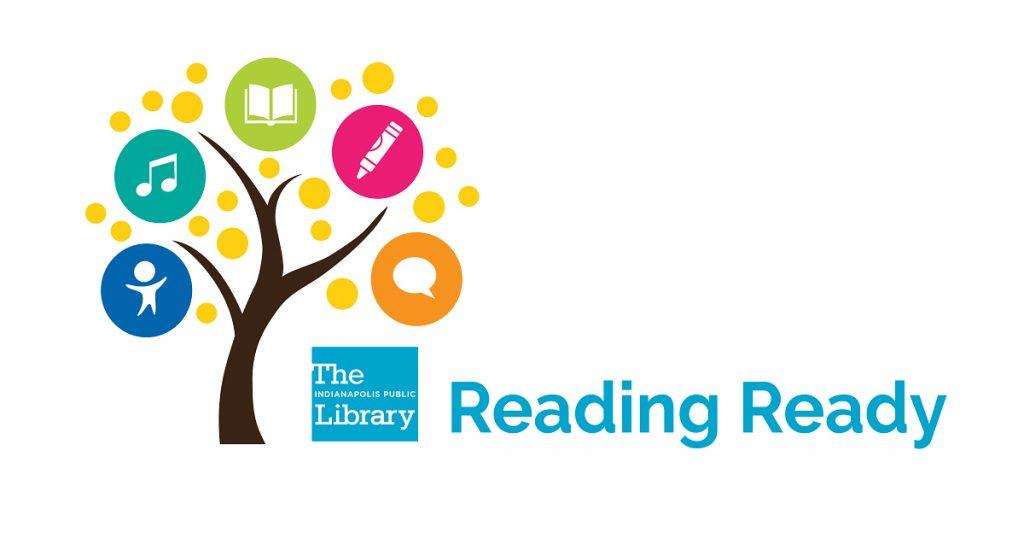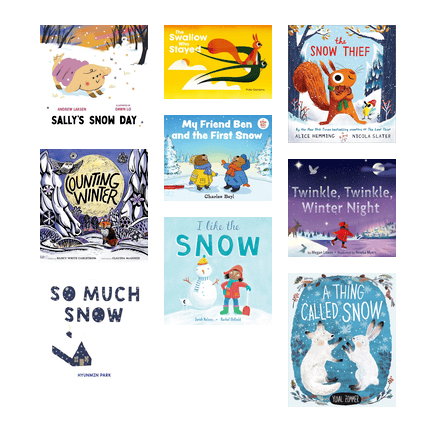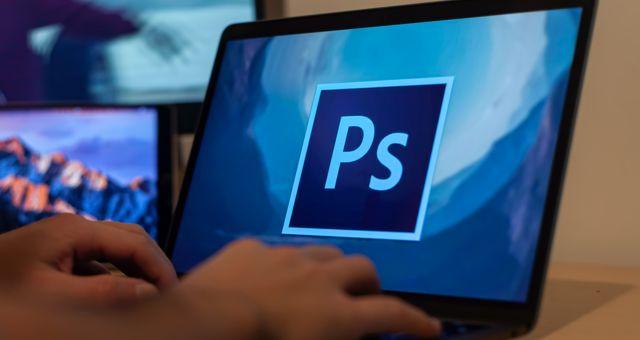The Library is thrilled to help host a book club on the Indy Now Morning Show with Ryan and Jillian on Fox59. Tune in at 10 a.m. every other Wednesday to catch book recommendations and IndyPL program highlights from your local librarians. Enjoy the most recent segment or browse the listing of past shows that highlight a variety of reading suggestions. You can also use the featured books links for easy borrowing.
Current Segment
July 3
Quick Reads Collection
(Deb Lambert)
2024
May 8
Meet Your Neighbor Programming Series and Travel-themed Books
(Keshia McEntire)
April 24
Dia del Niño Be My Neighbor Day
(Jessica Neeb-Smith)
April 10
Books About Building Community and the New Glendale Branch
(Amy Buell)
March 27
Patent and Trademark Resources
(Ryan Donnelly)
March 13
Books About Self-love and the Center for Black Literature & Culture Programs (Bryanna Barnes)
February 28
Joyful Books by Black Authors
(Keshia McEntire and Alton Parks)
February 14
Meet The Artists
(Jaquelyn Green)
January 17
Book Clubs
(Kris Gould, Keshia McEntire)
January 3
Books to Support New Years Resolutions
(Rachel Wood)
Indy Now Book Club Archive
2023
December 20
Graphic Novels and Arts Programs (Kelsey Abernathy)
December 7
Encyclopedia of Indianapolis (Natasha Hollenbach and Jyoti Verderame)
November 8
Fall Fest (Jacquelyn Green)
October 25
Books for Chess Players (Jordan Hunt, Charlie Cain)
September 27
Indy Cinema Series (Jason Davis)
August 30
Small Business Series (Alexandra Loewen)
August 16
Digital Creativity Work Stations (Dawn Hawkins and Stephanie Flood)
August 2
Disability Representation (Keshia McEntire)
July 5
Foraging Outside (Anika Williams)
June 21
More Than a Place Podcast (Sakura Fuqua)
June 7
Summer Reading Program (Emily Thomas)
April 12
Sci-Fi Books (Kirsten Weaver)
Featured Books: Sci-Fi Books
March 29
Dia del Nino (Emily Thomas)
Featured Books: Dia del Nino
March 15
Making a Positive Difference in the Community (Leah Kim)
Featured Books: Books for Hoosiers Hoping to Make a Difference
February 15
Romance Novels for Valentines Day (Kirsten Weaver)
Featured Books: Romance Novels for Valentines Day
February 15
Romance Novels for Valentines Day (Kirsten Weaver)
Featured Books: Romance Novels for Valentines Day
February 1
Meet the Artists (Kimberly Brown)
January 18
Biographies and Memoirs (Liz Schoettle)
Featured Books: Biographies & Memoirs
January 4
Computer and Technology Classes and Resources (Marianne Mackenzie & Charlie Cain)
Featured Books: Digital Skills for the New Year
2022
December 21
Holiday Book Recommendations for Families (Devery North)
Devery’s segment starts at 22:20.
Featured Books: Celebrate the Holidays Through Books
December 7
Fall Fest & Slammin’ Rhymes Challenge XVI (Kim Ewers)
Featured Books: Fall Fest & Slammin’ Rhymes
October 27
Center for Black Literature & Culture 5th Anniversary (Amira Malcom)
Featured Books: CBLC’s Fifth Anniversary
October 20
Book Recommendations (Rachel Wood)
September 28
Introduction to Kadir Nelson (Shael Weidenbach)
Featured Books: Kadir Nelson
August 31
Let’s Get Down to Business (Alexandra Loewen)
Featured Books: Books About Business
August 17
Book Clubs Available at the Indianapolis Public Library (Sakura Fuqua) We offer a variety of in-person and online book discussions for adults, teens & kids.
Learn more!
August 3
Good Reads About Money (Rachel Nevada Wood)
Featured Books: Good Reads About Money
July 20 Books with Indiana Ties (Shelby Graam-Pavan)
Featured Books: Books with Indiana Ties
July 6 Pick Up a New Hobby (Chris Hogsett)
Featured Books: Pick Up a New Hobby
June 22 Summer Love Reading Recommendations (Keshia McEntire)
Featured Books: Summer Romance
June 8 Summer Reads: Pride Month (Liz Schoettle)
Featured Books: Pride Reads
May 25
Adult Summer Reading Sports Reads (Rachel Wood)
Featured Books: Sports Reads
May 1
Adult Summer Reading Program (Leah Kim)
Featured Books: Books for Busy People
April 27
Graphic Novels (Chris Hogsett)
Featured Books: Graphic Novels for Kids
April 13
Spring Reads: Dystopian Fiction (Kirsten Weaver)
Featured Books: Dystopian Reads
March 31
Local Black Authors (Keshia McEntire)
Featured Books: Local Black Authors
March 16
Music Related (Rachel Wood)
Featured Books: Music-Related Reads
March 2
True Crime (Shelby Graam)
Featured Books: True Crime and Thrillers
February 16
Love Stories for February (Kirsten Weaver)
Featured Books: YA Love Stories
February 2
Book Club Kick Off (Rachel Wood)
Featured Books: Books by Black Authors
Find a book discussion near you!
- Event: WitLITS Book Discussion Group
- Date & Time: Friday, July 26, 10:00am
- Location: Spades Park Branch
- Description: A read aloud group exploring classic literature in a group reading.
- No Registration Required.
- Event: Adult Book Discussion at Eagle
- Date & Time: Monday, July 29, 6:30pm
- Location: Eagle Branch
- Description: Join us for a monthly book discussion. All are welcome! Visit the Ask Here desk or call today for information on reserving the book.
- No Registration Required.
- Event: Adult Book Discussion at Warren
- Date & Time: Thursday, August 01, 10:30am
- Location: Warren Branch
- Description: Join the Warren Book Discussion group as we share our thoughts on this month’s read, “The Book Woman of Troublesome Creek” by Kim Michele Richardson. Adults of all ages are invited to attend and new members are always welcome!
- Register Here






 From poignant to laugh-out-loud these picture book tributes to all kind of moms leave no doubt as to the true definition of unconditional love – mamas themselves. Perfect stories for Mother’s Day and every day.
From poignant to laugh-out-loud these picture book tributes to all kind of moms leave no doubt as to the true definition of unconditional love – mamas themselves. Perfect stories for Mother’s Day and every day.









 Enjoy these e-book and audiobook favorites for kids that highlight Easter traditions from family dinners, reading a child’s version of the Easter story in the Bible, or attending Easter services to dyeing and hiding Easter eggs.
Enjoy these e-book and audiobook favorites for kids that highlight Easter traditions from family dinners, reading a child’s version of the Easter story in the Bible, or attending Easter services to dyeing and hiding Easter eggs. 


















 It’s true, there’s no day like a snow day! Go out and play, and then cuddle up with some hot chocolate and a stack of these favorite winter tales.
It’s true, there’s no day like a snow day! Go out and play, and then cuddle up with some hot chocolate and a stack of these favorite winter tales. 












